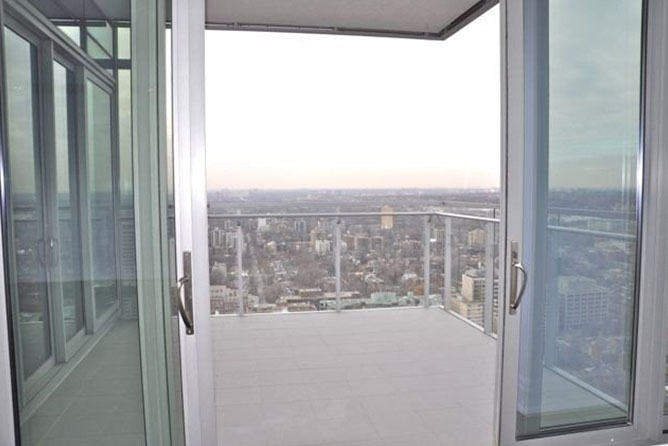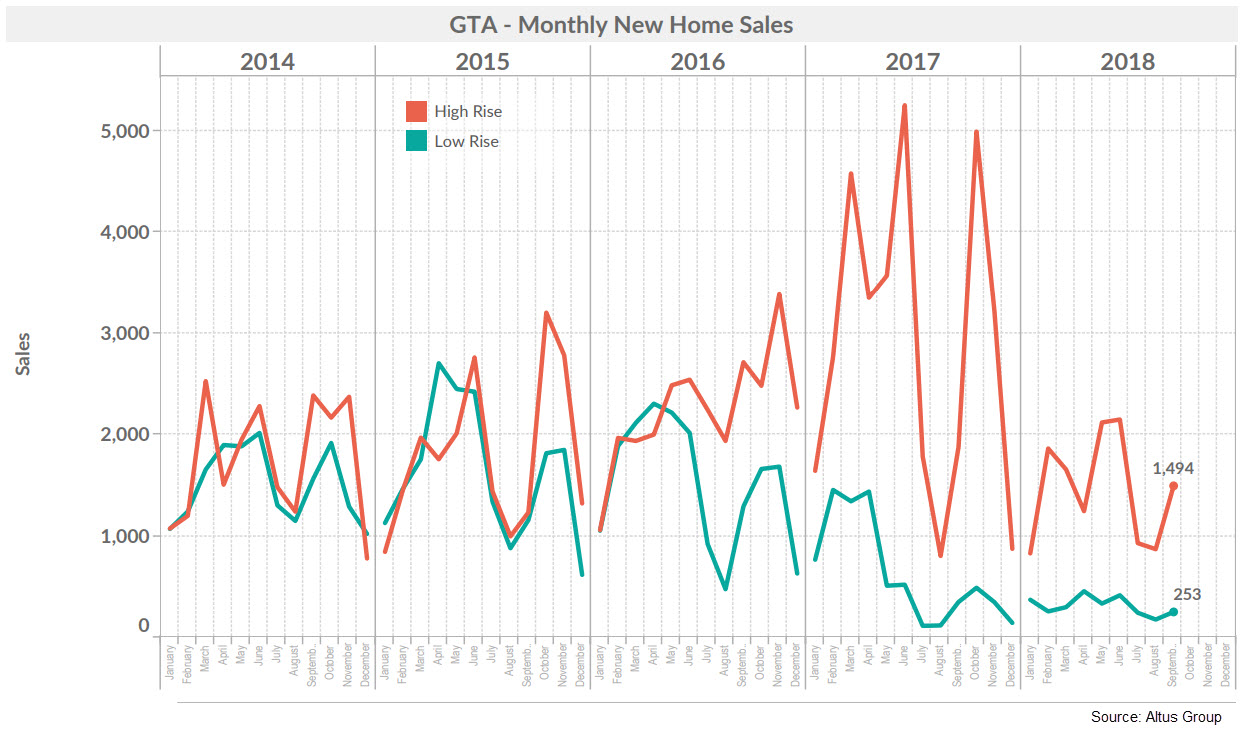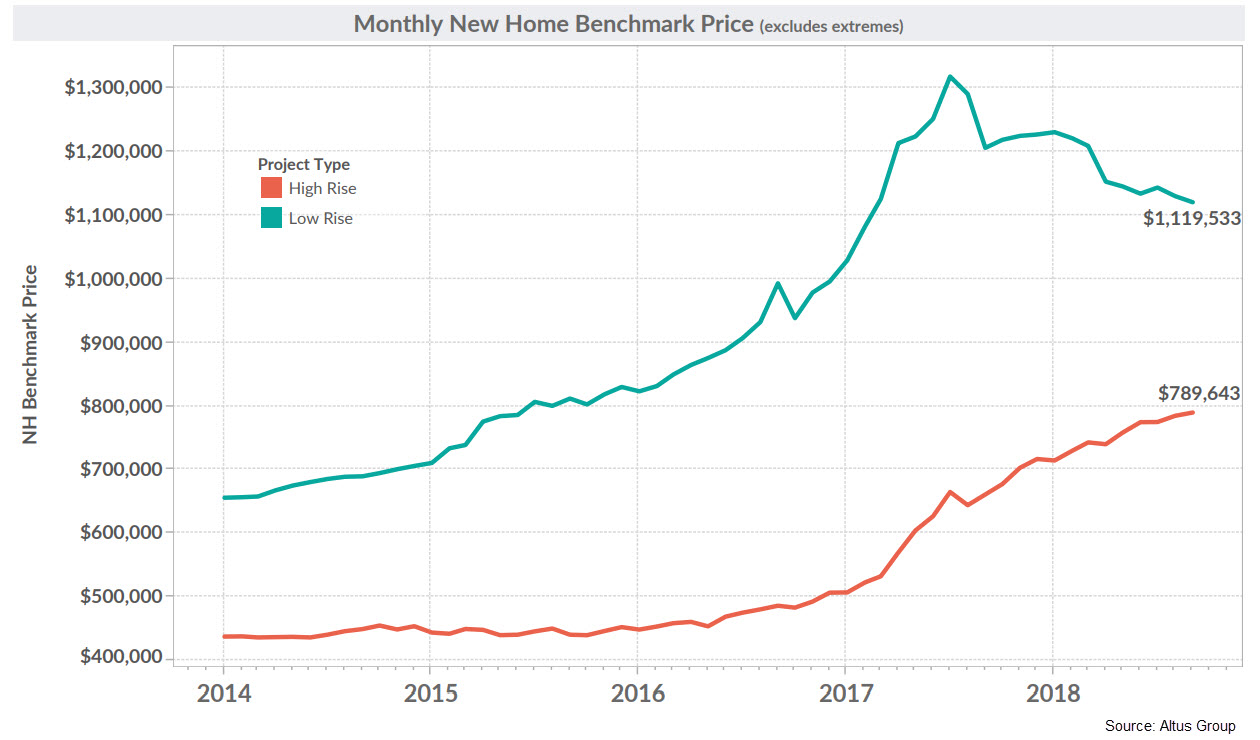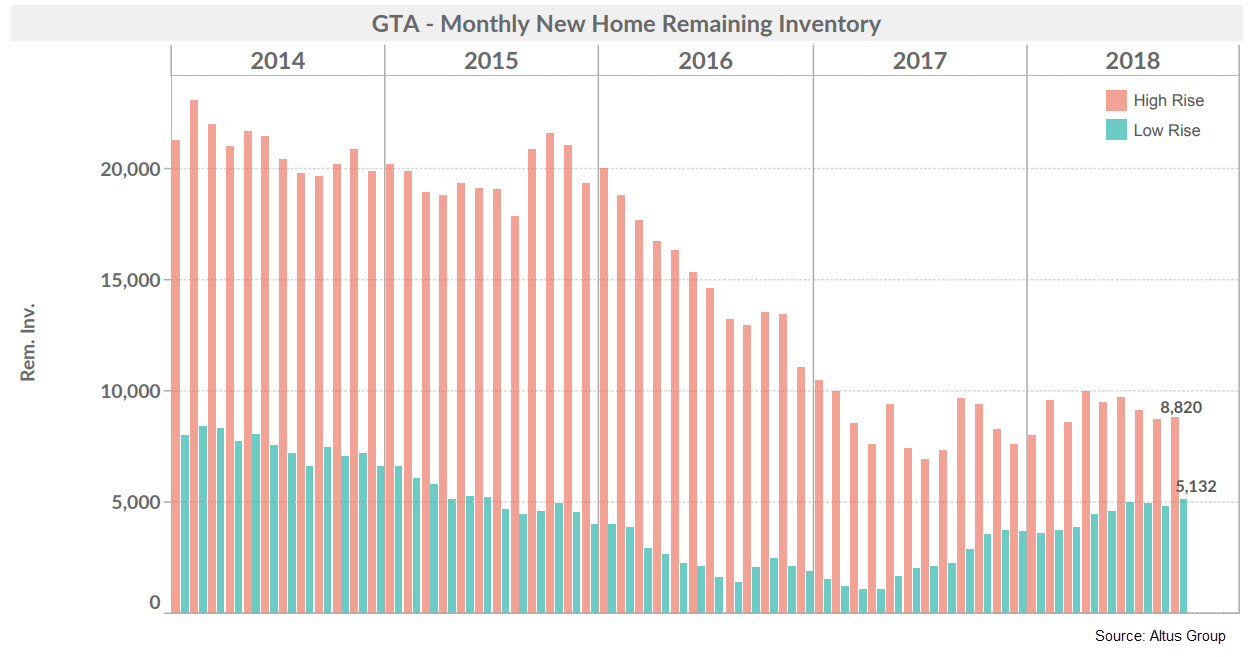Nestled in the heart of Yorkville, two glass towers rise above a scarlet fountain that gently gurgles as residents pull into a parking lot with paving stones arranged in paisley patterns.
The Four Seasons Private Residences Toronto is one of the most prestigious condo developments in Canada, a place where the moneyed elite can live modern urban lifestyles akin to Manhattan, Paris, London or Hong Kong.
But the glitz and glitter at the Four Seasons hide secrets.
Amid Toronto’s condo boom — which has fuelled one of the strongest real-estate markets in the world — a striking number of condos in the Four Seasons have sold for a loss.
A Toronto Star and Ryerson School of Journalism investigation into real-estate transactions in the Four Seasons found nearly one-third of sales in the towers have been for a loss.
Since condo owners took possession of their units in 2013, there have been 101 sales. Thirty of them were for a loss. The average loss recorded is $253,909 or 8.1 per cent.
Six of the losses are greater than half a million dollars.
“It’s not normal for people to be selling at a loss,” said John Pasalis, the founder of the real-estate analytics website Realosophy. “In the past five or six years generally prices have gone up … What’s going on here?”
The average price for a condo in Toronto has risen 67 per cent during the last five years, according to the Toronto Real Estate Board. Many people in the Four Seasons have also made money, selling for an average profit of $704,856 or 23.9 per cent.
But a subset of owners are selling for less than they paid.
The losses are so out of whack with the wider condo market that an agent who buys and sells in the towers didn’t believe they exist.
“No one person that bought at the Four Seasons lost,” said Elise Kalles, 80, a real-estate agent who specializes in the luxury market and owns two units in the Four Seasons. “I was involved right from the beginning. I don’t know, honestly, of any that sold for less than they paid. None.”
Kalles is listed as the agent for a unit holder who lost over $1 million in 2016, when she sold her unit for $5.7 million. The owner had bought pre-construction for $6.5 million (plus at least $326,212 in tax). Kalles and her client did not respond to questions about this transaction.
Nineteen losses were evident in sales prices listed in the Ontario land registry. Because buyers of newly built condominiums pay sales tax — and this extra cost isn’t included in the registered sales price — we added 5 per cent GST as the minimum amount of tax first purchasers would have had to pay. (Since mid-2009, 13 per cent HST is applied to the purchase of new condos.) With tax factored in, 11 sales that appeared to be for a small gain went instead for a loss.
The losses have occurred in every year but 2018 and have affected lower-, middle- and high-end units in both towers. Some were flips, where the seller owned the unit for as few as 29 days. Others involved units that were held for up to four-and-a-half years. One unit sold for a loss twice. The loss sales do not include 26 transfers between family members for $2 or $0.
Losses peaked in 2015, when 13 of the 21 sales in the towers left sellers in the red. There were four losses in 2016, three in 2017 and none this year to date.
The Star dug into land registry documents, mortgage filings, court records and corporate registrations in an attempt to understand the loss transactions. This task was complicated by a lack of transparency in the public registers that made it impossible to determine exactly what went on in each deal.
But the records point to a bigger problem in the housing market: poor oversight and weak regulations have made Toronto real-estate vulnerable to abuse.
The Star found no evidence of illegal activity in the Four Seasons. But as cities around the world — from New York to London to Vancouver — make moves to clamp down on financial crime by ending anonymous ownership of property, experts say Toronto’s real-estate market is exposed.
“If a province like Ontario and a financial sector like Toronto thinks that the same kind of things aren’t happening here, it’s just naive,” said James Cohen, executive director of Transparency International Canada.
Here are the stories of some of those who sold for a loss in one of Canada’s most elite developments.
Ryan Yen-Hwung Fong — Unit 5301
A $4-million unit was purchased by a convicted insider trader from Hong Kong and sold two years later for a loss of more than half a million dollars.
In 2005, Ryan Yen-Hwung Fong, 45, received confidential information about a proposed business deal and used the information to turn a profit, according to the Securities and Futures Commission (SFC) of Hong Kong. Fong had exchanged emails with his tipster using a code that referred to the deal as the purchase of a French car. He made more than $687,000 for himself and the fund he managed, according to the SFC.
In 2009, Fong pleaded guilty to insider trading, was sentenced to 12 months in prison and fined $213,500. The next year, the SFC banned Fong from re-entering the investment industry for life.
After getting out of prison, Fong took possession of unit 5301 in the Four Seasons, which he had bought pre-construction. It was 2013 and land registry documents show that Fong didn’t need a mortgage. He bought the condo for $3,775,221 (plus at least $188,761 in tax) all in cash.



According to Fong’s LinkedIn profile, he currently resides in Hong Kong and works as the managing director for SLS Capital Ltd., an investment firm based in New York. When a reporter repeatedly called SLS Capital, no one answered the phone and no voicemail was available.
In response to a list of questions about the condo transaction emailed to Fong, the Star received a letter from Deacons law firm in Hong Kong.
“We have evidence to prove that the contents as set out in the email contain serious, untrue and highly defamatory comments about our Client,” the letter stated.
When asked to point out specifically what was untrue, the law firm sent a second letter stating “our Client does not wish to correct the inaccuracies.”
Fong sold his unit in 2015 for $664,000 less than he paid for it.
When the pre-construction sales for the Four Seasons began in 2007, units at 55 Scollard Street and 50 Yorkville Avenue were priced between $1,350 and $1,500 per square foot — the most expensive condos in Canada at the time.
“It redefined Toronto real estate,” said Jimmy Molloy, a Toronto real-estate agent specializing in the luxury market. “All of a sudden, it just dragged everybody up … It just kind of changed the whole landscape of the marketplace.”
The 210 exclusive condos are split between the lower-priced “East Tower,” where you can still buy a unit for under $1 million, and the more prestigious “West Tower,” where a unit hasn’t sold for less than $3 million in years.
The West Tower condos sit atop a five-star hotel and owners in both towers have access to a French bistro, private yoga classes, a spa that has a reflexologist and a masseuse on call, and a psychic named Cyndi who will “guide you through a highly personal psychic and spiritual exploration.” Condo owners can also book travel aboard the hotel’s private jet.



The list of Four Seasons owners reads like a who’s who of Toronto’s elite, including Leafs’ coach Mike Babcock, Postmedia president Paul Godfrey, Rogers executive Anthony Staffieri, department store heir John Craig Eaton and Seagram’s liquor fortune heir Paul Bronfman.
While all of them still own their units, others sold for a loss. These losses could have been prompted by personal situations including rushed sales, divorces or incomplete renovations. There are also tax reasons why someone might want to take a loss on a real-estate transaction. Capital gains tax are due on the sale of a rental property. But if the sale goes for a loss, there are no taxes to pay — instead, you get a tax credit.
One agent involved in the tower suggested the losses could be due to the delayed opening of the towers, or because some buyers had difficulty obtaining bank mortgages and turned to higher-cost alternative lenders. Both of these situations may have pushed some pre-construction to sell their units early.
“A number of foreign investors decided to sell at the same time,” said Nissan Michael, an agent who specializes in buying and selling in the Four Seasons and markets himself as Mr. Yorkville. “Too much inventory and you’ve got a buyer’s market.”
Toronto businessman David Holton Young, 66, inherited unit 205 from his father, who passed away after putting down a pre-construction deposit. Shortly after registering the condo in 2013 for $2.3 million (plus at least $116,283 in tax), Young put it up for sale, where it languished on the market for almost two years before selling at a loss of more than $685,000.
“It took a long time and many price reductions to sell,” Young told the Star in an email. “In the hottest property market in the history of the city — to lose about 35 per cent over almost a decade takes some doing!”
Court records show that Frank Provenzano, 56, a former owner of ProGreen Demolition, was accused by two of his brothers of secretly withdrawing $8.5 million from the family company and using it to invest in real estate without their knowledge. One of those investments was unit 202 in the Four Seasons, which was purchased pre-construction for $1.2 million (plus at least $58,585 in tax). Two months after the lawsuit was filed last summer, Provenzano sold the unit for an $80,000 loss.
Provenzano did not file a statement of defence and did not respond to multiple requests for comment. His brothers dropped the case in May.
Japanese author Toshio Masuda, 80, bought unit 2503 for $4.1 million ($4.3 including tax) in March 2013 via a shell company called Frontier One Canada Investments Ltd. The same day, he and his wife, Mariko Ejiri, took out a $3.2 million mortgage from a Japanese meat packing company with an interest rate of 40 per cent. They sold the unit less than a year later for a loss of more than $375,000.
Masuda did not respond to emails or faxes sent requesting comment.
Oliver McGinley, a 48-year-old greenhouse operator and consultant for non-profits, purchased units 602 and 2402 in pre-construction for a combined $11.3 million (plus at least $566,372 in tax). When he took possession of the units in 2013, he registered private mortgages from cable mogul and family friend David Graham for $16.5 million — nearly 50 per cent more than the units’ purchase price.
Reached by telephone, McGinley said the mortgages, which were not fully drawn upon, financed extensive renovations he had done on the units. Despite these enhancements, McGinley wasn’t able to recoup the purchase price he paid, let alone the additional money invested in renovations.
“At the end of the day, I paid top of the market price based on a spec in advance. I just paid too much,” he said. “I don’t like losing and losing in a market that’s going up and up, but it is what it is.”
McGinley sold the smaller unit last year for a $7,000 profit. He sold the more expensive unit in 2016 for a $680,000 loss.
“I didn’t do anything wrong,” said McGinley. “My name was on these things. I couldn’t have been more transparent.”
In response to questions about the losses, Four Seasons company president Paul White sent the Star a statement that read in part: “Four Seasons Hotels and Resorts is a management company and, as such, we are not responsible for the conduct of sales or resales of residential units.”
“We firmly believe that Four Seasons Private Residences Toronto is the best address in the city and we are very proud to serve the community of residents who have chosen Four Seasons as their home.”
Simion Kronenfeld – Unit 3401
Shortly after emerging from bankruptcy, Toronto entrepreneur Simion Kronenfeld, 47, registered more than $3 million in private mortgages to buy a unit in the Four Seasons. He then flipped the condo for hundreds of thousands of dollars less than its purchase price — but says he didn’t lose any money.
Born in Russia and raised in Israel, Kronenfeld immigrated to Canada as a teen in 1986. In 1993, he pleaded guilty to possession of counterfeit $100 bills and was fined $2,500. Because of the conviction, he was issued a deportation order in 1995.
He returned to Canada the next year and in 2001 founded Electronic Liquidators Inc., a company that made him millions by reselling used electronics. In 2008, he lost much of that money in casinos, becoming one of Las Vegas’ largest debtors ever, with gambling debts topping $18 million.
At the same time, his bank, RBC, filed a lawsuit claiming he had opened accounts and obtained credit cards with two different names and social insurance numbers and defrauded the bank by cashing more than $1 million in bad cheques.
In his statement of defence, Kronenfeld denied he defrauded RBC and denied using aliases, explaining that “various variations of his name result from the translations from Russian to Hebrew and then to English.” Kronenfeld stated he relinquished his social security number when he was deported to Israel and was issued a new one when he returned to Canada.



By the time Kronenfeld filed for bankruptcy in 2010, he was more than $26 million in debt. He received an absolute discharge from bankruptcy in November 2011, staying RBC’s lawsuit and erasing his Canadian debts, but leaving his American ones in place.
Fourteen months later, on February 7, 2013, Kronenfeld purchased unit 3401 in the Four Seasons, registering it for $2,997,084 (plus $179,773 in tax).
The same day, Kronenfeld took out two mortgages. Public records show Diana’s Management Inc. issued a $1.2 million mortgage. The corporation is registered to Diana Bahrin, Kronenfeld’s wife.
Tammy Herzog registered a second mortgage: $2 million with zero per cent interest. Herzog is the daughter of the late developer Sam Herzog, whose company, Lifetime Developments, was one of the two developers of the Four Seasons towers.
Bahrin and Herzog did not respond to repeated requests for comment.
Only five months after buying it, Kronenfeld sold the unit for $2.8 million, nearly $377,000 less than the purchase price.
Kronenfeld’s lawyer, Stanley Rosenfarb, told the Star that Kronenfeld did not lose money on the sale, and actually made $500,000 because he did not pay the deposits on the unit. The pre-construction buyer, Alexander Zeltser, who had paid $952,800 in deposits, could not get a mortgage, Rosenfeld said, and Kronenfeld stepped in.
“Mr. Kronenfeld agreed to pay the balance due on closing … in exchange for title to Suite 3401,” Rosenfarb wrote in an email.
According to Rosenfarb, Kronenfeld did not compensate Zeltser for his deposits, paying him a portion of the sales proceeds instead.
Rosenfarb also said the $2-million mortgage from Herzog did not have a 0 per cent interest rate because Kronenfeld had pre-paid her $217,000 in interest. In addition, Kronenfeld only borrowed $295,000 from his wife’s company, Rosenfarb said, and not the full $1.2 million that was registered.
“There was absolutely nothing inappropriate, improper, surprising or newsworthy about any aspect of Mr. Kronenfeld’s purchase and subsequent sale of the condo,” Rosenfarb wrote.
Eight months after the sale, Kronenfeld was indicted by a Nevada grand jury for his gambling debt and 12 separate felonies including theft, obtaining money under false pretenses, and the use of bad cheques. (Nine of the charges were dropped in 2015.) A bench warrant was issued for Kronenfeld’s arrest and remains active today.
Lawyer Julian Porter, who was retained by Kronenfeld after he was contacted by the Star, wrote: “There is no public benefit in your smearing Mr. Kronenfeld with his past bankruptcy and criminal charge emanating from Nevada.”
Porter sent the Star a report he commissioned from real-estate agent Jamie Erlick, which analyzed four similar sized units in the Four Seasons that had difficulty finding buyers and concluded “during the years 2013/2014 it would have been difficult to get much over $2,600,000 for the 1,956 sq ft unit.”
Not included in Erlick’s report was the unit next door to Kronenfeld’s, which sold for $3.2 million in September 2013 — a profit of nearly $150,000.
A lack of transparency in Ontario’s land and corporate registries makes it difficult or even impossible to determine the ownership of 51 units in the Four Seasons, which have been or are currently held by private (that is, not publicly-traded) corporations.
Twelve of the 51 corporations are numbered companies, six of which were incorporated a couple of months or mere days before purchasing the unit.
Eight of the 30 loss transactions involve private corporations.
Anonymity in Canadian real estate can be further bolstered by offshore tax havens, making it doubly difficult for tax officials or law enforcement to trace the origin of funds. Six units are held by companies with addresses in offshore tax havens, such as Delaware, Bermuda, Malta and the Cayman Islands.
Unit 4603, for example, was purchased for $4.6 million in cash (plus at least $231,835 in tax) by Pramor Global Financial Corp., a company registered in the British Virgin Islands. Because the BVI allows companies to keep the names of its shareholders and directors private, the people behind Pramor are completely anonymous, unknowable to anyone without a warrant. The unit is still owned by Pramor.
Max Motel Cohen, the Toronto lawyer who filed real-estate documents on behalf of Pramor, declined to identify his client.
“The purchase of land by well-to-do individuals or holding companies, for cash, is not that unusual,” Cohen said in an email.
Unit 206 was purchased by 60 Degrees Group Canada Ltd., a company registered to a mailbox in the Cayman Islands. The only names associated with the company are Barry Cleaver, a London, ON, lawyer, and Mark Joseph Azzopardi, a Maltese banker. The real owner of the unit is unknowable.
A year after buying the unit for $875,000 in cash, the anonymous owner took out a $2-million mortgage from another offshore company registered at the same post office box in the Cayman Islands.
The Star was unable to reach Azzopardi. Cleaver said the unit was not the only piece of property pledged as security for the mortgage. The unit sold in October for a $115,000 profit.
Alexandre Ventura Nogueira and Alexander Altshoul — Unit 1902 and 1702
Two units in the towers were used to pay off a debt by a pair of businessmen charged with mortgage fraud, one of whom fled justice and remains a fugitive today.
Alexandre Ventura Nogueira, a 44-year-old Brazilian, and Alexander Altshoul, a 47-year-old Belorussian-Canadian, were business partners in the late 2000s selling condos in Panama City — including in the Trump Tower — according to a Reuters/NBC investigation published last year. They double sold pre-construction units and deposits disappeared, according to the report.
In 2009, Panamanian police charged Ventura Nogueira with fraud and forgery stemming from his work selling condos. Released on $1.4 million (U.S.) in bail, he fled the country and is still at large.
Ventura Nogueira did not respond to requests for comment from the Star.
In 2007, York Regional Police charged Altshoul with fraud and conspiracy to commit fraud. The charges were dropped a year later.
While the charge was still outstanding, Toronto lawyer Stanley Ehrlich testified at a hearing at the Law Society of Upper Canada that Altshoul had forced him to participate in fraudulent real-estate transactions between 2001 and 2005.
Ehrlich told the panel that when he participated in the frauds, he was “acting under life-threatening duress from which there was no safe avenue of escape.”
“His position is that he had fallen into the clutches of what he calls the ‘Russian mafia,’ that he was an innocent victim of their ruthless conduct, and that the same thing could have happened to any other honest Lawyer,” the Law Society’s panel wrote.
In 2008, the panel found Ehrlich guilty of participating in the mortgage fraud, writing that he “greatly exaggerated the threats.” Ehrlich was disbarred and had his licence revoked.
Altshoul did not respond to requests for comment from the Star.
At some point between 2007 and 2009, Ventura Nogueira and Altshoul each put pre-construction deposits down on a unit in the Four Seasons in Toronto.



Before the towers were completed, however, Altshoul and Ventura Nogueira were criminally charged in Panama with defrauding a business partner, Joseph Martin Rodin, according to court documents obtained by the Star.
In August 2009, they signed over their deposits to Rodin’s wife and daughter as repayment for the debt. But Maria Rodin says she and her step daughter Marcela were cheated by the men, because the deposits weren’t paid in full.
“(Ventura) told us he paid the deposit, but in the end, he only paid only half the deposit. He was in arrears,” Maria Rodin told the Star in an interview.
The Four Seasons asked the Rodins to pay an outstanding sum of $259,000, according to emails seen by the Star.
In 2013, the Rodins registered the units for $3.3 million (plus at least $165,888 in tax). Martin was not present at the closing because he was facing corruption charges in Panama and had been issued a travel ban. The charges were dropped and the travel ban was lifted in 2014.
The Rodins were unable to cover their mortgage and condo fees with the rent they received from the units. Less than two years after purchasing them, they sold the units for a combined $433,000 loss.
“(Ventura) was very nice to us. He pretended to be our friend. We trusted him,” Maria said. “And in the end, we lost twice.”
In 2016, the United States Treasury Department started tracking real-estate purchases by shell companies in the hot real-estate markets of Manhattan and Miami. It found that more than a quarter of cash purchases of property by shell companies were flagged as suspicious. The monitoring program has now been expanded to six other areas including San Francisco, Los Angeles, San Diego and San Antonio.
Earlier this year, British Columbia implemented reporting rules that will require anonymous companies that purchase real estate to identify their real owners to authorities.
After the U.K. House of Commons proposed a ban on real-estate ownership through shell companies in July, there will soon be few places left with as little transparency as Ontario.
“It’s still a bit of a Wild West that’s not policed,” said Realosophy’s Pasalis.
Source : Star Newspapers



















 Maziar Moini, Broker of Record - Home Leader Realty Inc.
300 Richmond St. W., #300, Toronto, ON M5V-1X2
Maziar Moini, Broker of Record - Home Leader Realty Inc.
300 Richmond St. W., #300, Toronto, ON M5V-1X2

